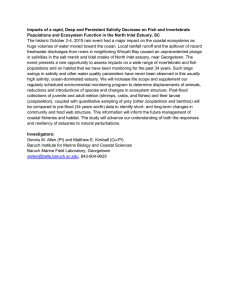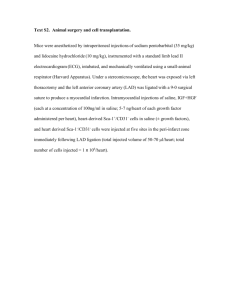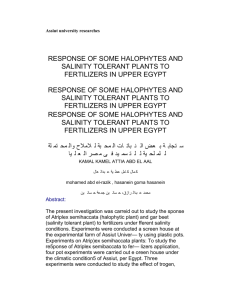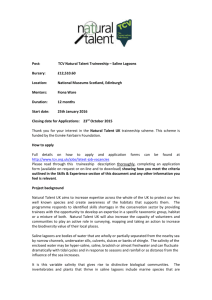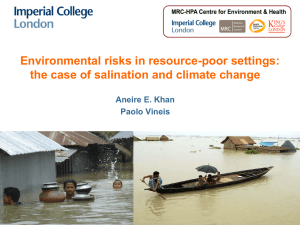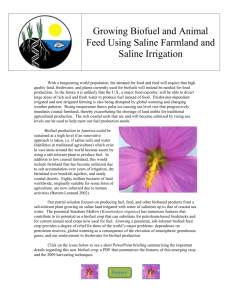73-SKG-ISC12-_Abstract
advertisement
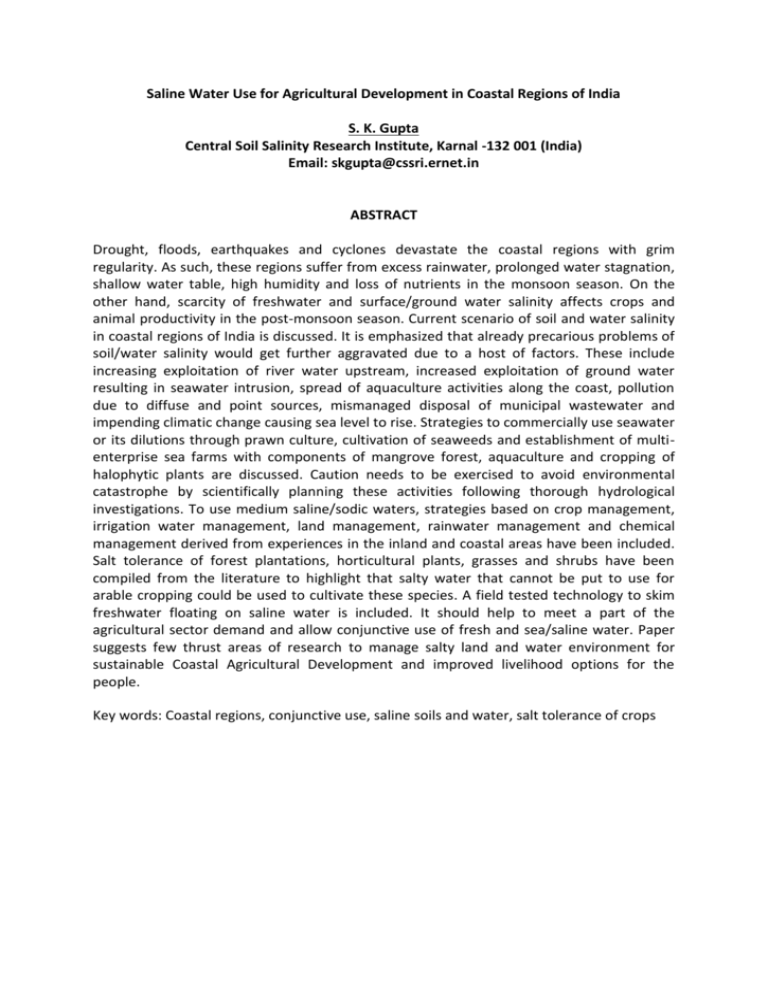
Saline Water Use for Agricultural Development in Coastal Regions of India S. K. Gupta Central Soil Salinity Research Institute, Karnal -132 001 (India) Email: skgupta@cssri.ernet.in ABSTRACT Drought, floods, earthquakes and cyclones devastate the coastal regions with grim regularity. As such, these regions suffer from excess rainwater, prolonged water stagnation, shallow water table, high humidity and loss of nutrients in the monsoon season. On the other hand, scarcity of freshwater and surface/ground water salinity affects crops and animal productivity in the post-monsoon season. Current scenario of soil and water salinity in coastal regions of India is discussed. It is emphasized that already precarious problems of soil/water salinity would get further aggravated due to a host of factors. These include increasing exploitation of river water upstream, increased exploitation of ground water resulting in seawater intrusion, spread of aquaculture activities along the coast, pollution due to diffuse and point sources, mismanaged disposal of municipal wastewater and impending climatic change causing sea level to rise. Strategies to commercially use seawater or its dilutions through prawn culture, cultivation of seaweeds and establishment of multienterprise sea farms with components of mangrove forest, aquaculture and cropping of halophytic plants are discussed. Caution needs to be exercised to avoid environmental catastrophe by scientifically planning these activities following thorough hydrological investigations. To use medium saline/sodic waters, strategies based on crop management, irrigation water management, land management, rainwater management and chemical management derived from experiences in the inland and coastal areas have been included. Salt tolerance of forest plantations, horticultural plants, grasses and shrubs have been compiled from the literature to highlight that salty water that cannot be put to use for arable cropping could be used to cultivate these species. A field tested technology to skim freshwater floating on saline water is included. It should help to meet a part of the agricultural sector demand and allow conjunctive use of fresh and sea/saline water. Paper suggests few thrust areas of research to manage salty land and water environment for sustainable Coastal Agricultural Development and improved livelihood options for the people. Key words: Coastal regions, conjunctive use, saline soils and water, salt tolerance of crops
